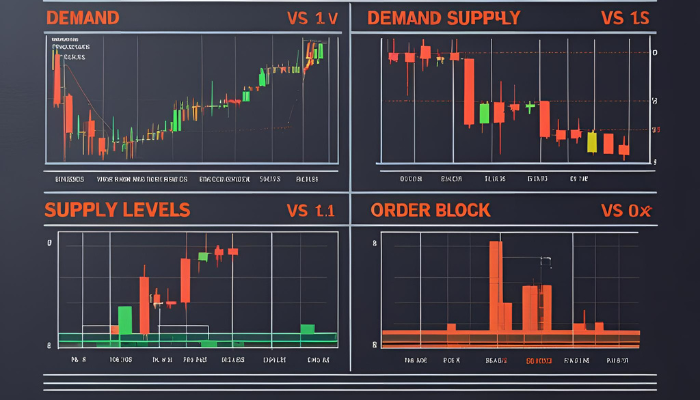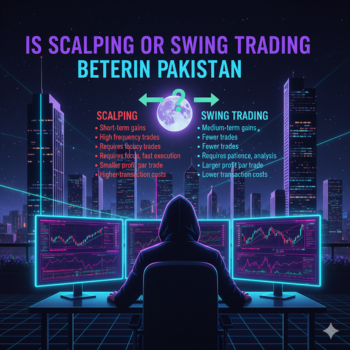Last Updated on July 24, 2025 by Deon
Knowing where the price may respond can make all the difference in trading, whether that means capturing an exciting move or getting stopped out. Two effective tools traders utilize for pinpointing high-probability reaction zones are Demand/Supply Zones and Order Blocks.
Though both appear similar on charts, they serve different market mechanics and provide distinct analytical benefits. You can have a look at the characteristics and differences between Demand and Supply Levels vs Order Block in detail for strategic money price action.
Demand and Supply Zones: A Comprehensive View
Demand and Supply Zones are price areas where buyers and sellers exhibit strong imbalances that have led to sharp movements in prices.
Demand Zone
It is a price area in which buyers outnumber sellers, leading to a strong upward price spike that often follows periods of consolidation or retracement.
Supply Zone
It is an area in which sellers are outnumbered by buyers, forcing prices sharply down when demand increases after a top range or market peak formation.
These zones are relatively broad and represent general areas of interest for traders. Their logic relies upon market memory. Traders foresee that the price may react strongly at certain zones in the past and do so again in the future.
Characteristics of Demand/Supply Zones
Buyer/seller imbalances typically form after strong directional moves and are used as areas for potential reversals and continuation. They provide less precise signals, highlighting zones rather than specific candles.
Order Blocks for Institutional Footprint Management Solutions
Order Blocks are more defined zones associated with institutional trading and Smart Money Concepts, typically within institutional orders that precede significant price movements, where large orders were possibly placed by institutions.
Bullish Order Block
It is defined as the final bearish candle before an aggressive bullish move.
Bearish Order Block
It is the last bullish candle before a decisive bearish move.
Institutions often cannot fill massive orders immediately, leaving an order block’s ‘footprint’. When prices return within their ranges for order blocks, unfilled orders could still exist and cause reactions in the form the price or volume changes.
Characteristics of Order Blocks
- More precise based on specific candles
- Indicate where institutional orders may have been placed
- Can be involved with liquidity grabs and market structure shifts
- Can be utilized for more refined entry strategies with tighter risk controls
Demand and Supply Levels Vs Order Block: Comparative Analysis
Precision
Order blocks provide much greater precision in pointing out price levels where institutional activity took place than general supply/demand zones. They provide evidence of activity at specific price points where institutional money changes occur.
Origin
Supply/demand zones arise due to general market activity, while order blocks are directly tied to institutional order execution.
Application
Traders employ demand/supply ratios and order blocks as tools for identifying areas prone to either reversal or continuation in trading activity, while using imbalanced demand/supply relationships to validate such positions. A strong imbalance might confirm such order blocks.
Combine Both to Achieve Better Accuracy
Successful traders utilize both ideas simultaneously. Start by drawing Demand/Supply Zones as markers of institutional interest on larger timeframes, then utilize Order Blocks to fine-tune entries, reduce risk, and enhance trade timing.
Learning of Demand and Supply Levels Vs Order Block Helps You Detect Institutional Trend & Sharpen Your Trade Strategies
While Demand/Supply Levels and Order Blocks both attempt to detect institutional intent, each takes a different approach in doing so. One gives you a broad perspective, the other sharpens on detail. By mastering both tools simultaneously, traders will become better equipped at anticipating reactions quickly, recognizing false breakouts early, and aligning their trades with real money in real-time.
You can approach Neuron Markets, a genuine platform for step-by-step traders’ guidance. They train you with all the necessary tactics that will make your trade journey smooth with full confidence. Learning how to interpret these zones effectively will put you one step closer to trading with, rather than against, an institutional mindset.




